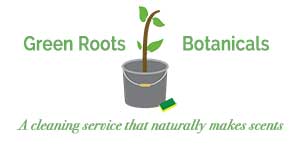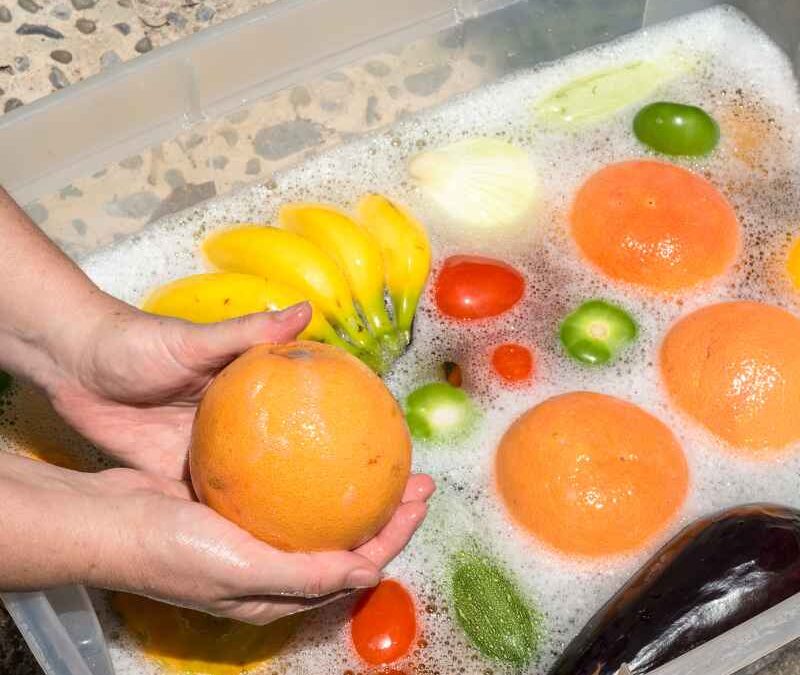The Ultimate Guide to Fruit and Veggie Wash: How to Clean and Enjoy Your Produce Safely
Welcome to our comprehensive guide on fruit and veggie washes! In our pursuit of a healthy lifestyle, it’s essential to ensure that the fruits and vegetables we consume are free from harmful contaminants. This guide will walk you through everything you need to know about fruit and veggie washes, their benefits, and how to use them effectively to clean and enjoy your produce safely. Let’s dive in and discover the secrets to spotless and healthy fruits and vegetables! Bonus fruit and veggies wash recipe included!
Why is Cleaning Your Fruits and Vegetables Important?
Eating fresh fruits and vegetables is an integral part of a nutritious diet. However, it’s equally crucial to clean them properly to remove potential risks such as pesticide residues, bacteria, and dirt. Here’s why cleaning your produce is so important:
- Pesticide Residues: Many commercially grown fruits and vegetables are treated with pesticides to protect them from pests and diseases. Cleaning them helps remove these chemical residues, reducing your exposure to potentially harmful substances.
- Bacteria and Dirt: Fruits and vegetables can harbor bacteria, dirt, and other contaminants, either from the field or during transportation and handling. Thoroughly cleaning them helps eliminate these impurities and reduces the risk of foodborne illnesses.
Introducing Fruit and Veggie Washes: What are They and How Do They Work?
Fruit and veggie washes are specially formulated solutions designed to remove surface contaminants from produce. These washes are different from plain water because they contain specific ingredients that enhance their cleaning power. Here’s how they work:
- Composition: Fruit and veggie washes typically contain natural or organic ingredients such as plant-based surfactants, enzymes, and mild acids. These components help break down and remove pesticide residues, bacteria, wax coatings, and other impurities.
- Mechanism: When applied to fruits and vegetables, the washes work by loosening dirt, pesticide residues, and other contaminants from the produce’s surface. This enables them to be easily rinsed away, leaving behind cleaner and safer fruits and vegetables.
Benefits of Using Fruit and Veggie Washes
Using fruit and veggie washes provides several benefits for your health and well-being. Let’s explore these advantages:
- Removes Pesticide Residues: Fruit and veggie washes effectively eliminate pesticide residues, reducing your exposure to potentially harmful chemicals.
- Removes Dirt and Bacteria: These washes help remove dirt, bacteria, and other contaminants that can pose health risks if consumed.
- Enhances Shelf Life: By eliminating microorganisms that contribute to spoilage, fruit, and veggie washes can extend the shelf life of your produce, allowing you to enjoy it for longer.
- Promotes Food Safety: Using fruit and veggie washes ensures that the food you serve to your family is clean and safe to eat, reducing the chances of foodborne illnesses.
How to Use Fruit and Veggie Washes Effectively
Now that you understand the benefits, let’s learn how to use fruit and veggie washes effectively:
- Choosing the Right Wash: Select a fruit and veggie wash that suits your needs. Look for one that is specifically designed for produce and is free from harsh chemicals.
- The Proper Washing Technique:
- Rinse: Start by rinsing your fruits and vegetables under filtered or bottled water to remove loose dirt and debris.
- Apply Wash: Spray or soak your produce in the fruit and veggie wash solution, following the instructions on the product label.
- Scrub (if necessary): For firmer produce like apples or potatoes, gently scrub the surface with a clean brush to remove stubborn dirt or wax coatings.
- Rinse Again: Thoroughly rinse your produce under running water to remove any remaining wash residue.
- Dry: Pat dry or use a clean cloth to dry your fruits and vegetables before consuming or storing them.
- Soaking vs. Spraying: Soaking produce in a wash solution is ideal for leafy greens and delicate fruits, while spraying works well for larger items. Adjust your method based on the produce you are cleaning.
DIY Fruit and Veggie Wash Recipe
If you prefer a DIY option, you can create a natural fruit and veggie wash using essential oils and other simple ingredients. Here’s a recipe you can try:
DIY Fruit and Veggie Wash Recipe:
Ingredients:
- 1 cup of distilled water
- 1 tablespoon of vinegar (white or apple cider vinegar)
- 5 drops of lemon essential oil
- 5 drops of grapefruit essential oil
Tools:
Instructions:
- In a spray bottle, combine the distilled water and vinegar.
- Add the lemon essential oil and grapefruit essential oil to the mixture.
- Secure the spray bottle cap and shake well to blend the ingredients.
- Spray the solution onto your fruits and vegetables, ensuring they are thoroughly coated.
- Follow the rinsing and drying steps mentioned earlier to complete the cleaning process.
Fruit and Veggie Soak Recipe:
Ingredients:
- 4 cups of water
- 1 cup of distilled white vinegar
- 1 tablespoon of baking soda
- 5 drops few drops of lemon essential oil
Tools:
Instructions:
- In a large bowl or basin, combine the water and vinegar.
- Add the baking soda to the mixture and stir until it dissolves.
- If desired, add a few drops of lemon essential oil for a pleasant fragrance.
- Place your fruits and vegetables in the mixture, ensuring they are fully submerged.
- Let them soak for 10-15 minutes.
- After the soaking time, remove the produce from the mixture and rinse them thoroughly under running water.
- Pat dry or use a clean cloth to dry the fruits and vegetables before consuming or storing them.
This soak helps remove dirt, bacteria, and pesticide residues from the surface of your fruits and vegetables, leaving them clean and ready to enjoy.
Tips for Storing Cleaned Produce
After cleaning your fruits and vegetables, it’s important to store them properly to maintain their freshness and prevent cross-contamination. Here are some useful tips:
- Refrigeration: Store cleaned produce in the refrigerator to slow down the growth of bacteria and maintain their quality.
- Airtight Containers: Use airtight containers or resealable bags to keep your fruits and vegetables fresh and prevent them from absorbing odors from other foods.
- Separate Storage: Store different types of produce separately to prevent cross-contamination. Fruits and vegetables release natural gases that can cause spoilage if mixed together.
Frequently Asked Questions (FAQs) about Fruit and Veggie Washes
Here are answers to some common questions you may have about fruit and veggie washes:
- Q: Are fruit and veggie washes safe?
- A: Yes, when used as directed, fruit and veggie washes are safe to use on your produce. They are formulated to be gentle yet effective in removing contaminants.
- Q: Can I use soap to wash my fruits and vegetables?
- A: No, it is not recommended to use soap or dish detergent on fruits and vegetables, as they may leave behind residues that are not safe for consumption.
- Q: Do I need to wash organic produce?
- A: Yes, even organic produce should be washed to remove any potential dirt, bacteria, or residues that may have come into contact with it during transportation or handling.
Conclusion
By incorporating fruit and veggie washes into your routine, you can ensure cleaner and safer fruits and vegetables for you and your family. Remember to choose the right wash, follow the proper washing technique, and consider making your own natural wash using the DIY recipe provided. Enjoy the peace of mind that comes with knowing your produce is free from harmful contaminants, and embrace a healthier lifestyle. Happy cleaning and happy eating!
Have fun creating a life that naturally makes scents!
Read Next:
The Benefits of Aromatherapy Cleaning
The information provided here is intended for educational purposes only and is not a substitute for professional medical advice, diagnosis, or treatment.
Some of the links on this website are affiliate links, which means that we may earn a commission if you click on the link or make a purchase using the link. When you make a purchase, the price you pay will be the same whether you use the affiliate link or go directly to the vendor’s website using a non-affiliate link. As an Amazon associate, I earn from qualifying purchases.



